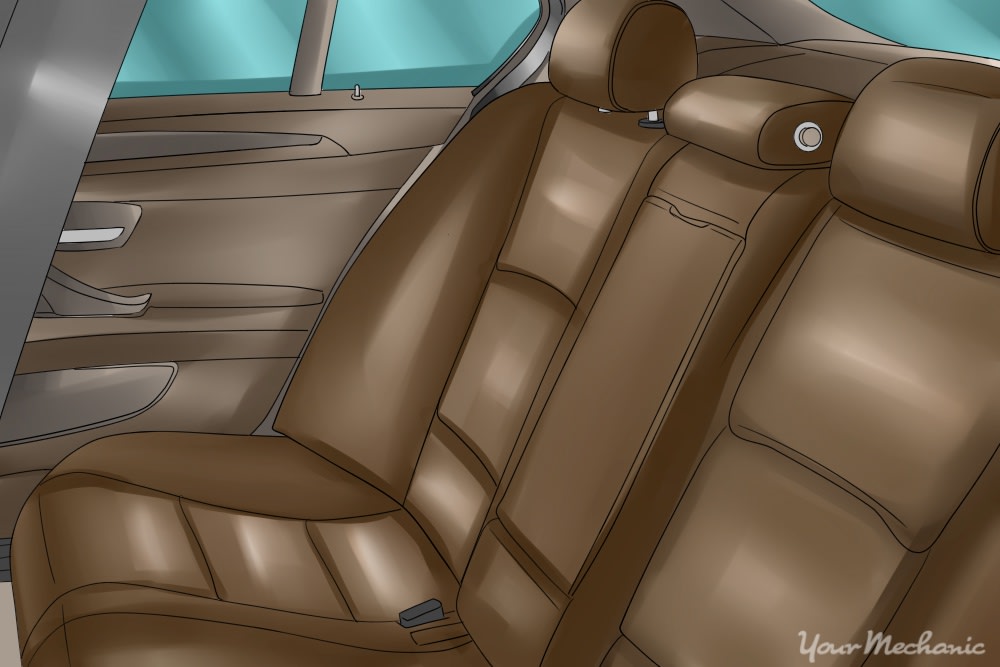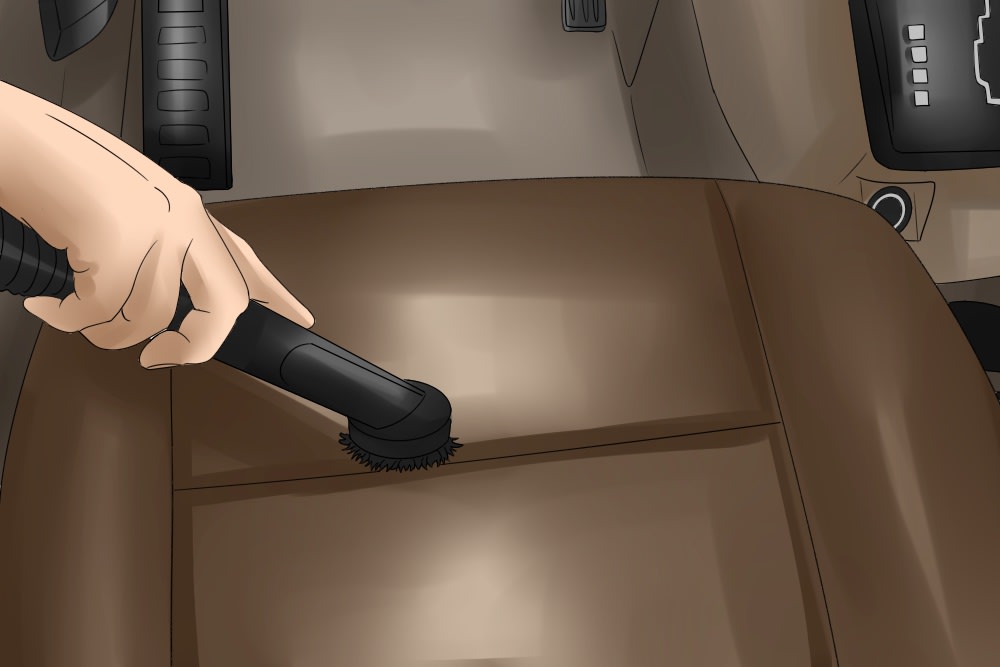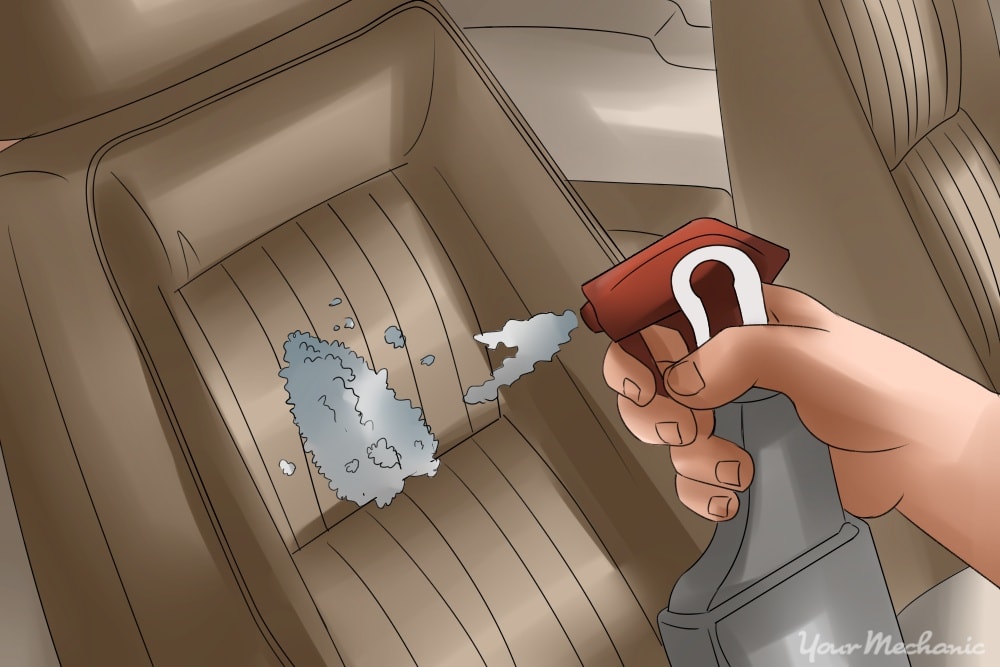

A leather interior can be an expensive option on a vehicle and protecting it should be a priority. Leather seats will last the lifetime of the car if properly cleaned and cared for on a regular basis. Unfortunately, dirt and even skin oils can damage leather seats and the longer seats remain uncleaned, the more damage it creates. To clean your leather car seats, follow these steps:
How to clean leather car seats
Carefully examine your car seats - Look for holes, cuts or any other damage. Mark any holes or cuts so you can be sure not to get any liquids into the interior of the seat. This can damage the underlying foam in the seats.
Gather the right materials - You will need the following: A bucket of water, Leather cleaner, Leather conditioner, Soft bristled scrubbing brush, Soft and clean microfiber cloth or sponge, and Vacuum
-
Find the best leather cleaner - Leather cleaner can be purchased at just about any hardware or auto parts store. You should avoid vinyl cleaners or any petroleum or silicone based products, as they will make the leather look too shiny.
Tip: It is also possible to make your own leather cleaning solution. Simply mix one-part vinegar with two parts linseed oil. This homemade version tends to be less abrasive and can help the leather wear better.
-
Pre-clean the seats - Once you have carefully examined the seats it is time to get to work. A little pre-cleaning before you apply the leather cleaner will help the process go quicker and produce better results.
-
Vacuum the seats - Before applying a leather cleaner, it is best to vacuum up any large debris as well as any small crumbs. Using a wet-dry vacuum or regular vacuum with the hose attachment is the best way to get this done.
Tip: Use a brush attachment so you don’t damage the leather while vacuuming it.
Wipe the seats clean - Before applying the leather cleaner to the seats, it’s a good idea to wipe down the leather with a clean damp cloth. This will remove any grease, dust or dirt so that the leather cleaner can focus on any ground-in dirt.
-
Do a spot test - Before lathering up your entire front seat it is a good idea to do a spot test on a small patch of leather that is out of view. This will ensure that the leather cleaner you chose will not damage or discolor your leather. If you are not happy it gives you a chance to switch it out before putting it on all of the leather.
Apply the leather cleaning solution - Spray a leather foam cleaner directly onto the leather seats. In most cases, only 3 to 4 squirts are required. If the seats are really filthy, extra cleaner may be necessary. Check the instructions before application and follow the manufacturer’s directions.
-
Activate the foam - Use the soft wet cloth to rub the foam. The water will help activate the foam. Leave the foam on the seats for several minutes, which should help break up any dirt and grime.
Warning: Be sure to check the manufacturer’s directions for exact instructions.
Use a brush for deep cleaning - The brush should be used to deep clean the leather, especially in spots that are extremely dirty. Gently use the brush to get the dirt and grime off the seats.
-
Wipe down the seats - Wipe the seats down, using a dry cloth to wipe the foam off of the seats.
Tip:A microfiber cloth will ensure that you remove all of the foam. Hopefully your seats are now clean. If a stubborn spot persists, repeat the previous steps, giving the spot an extra measure of elbow grease with the scrubbing brush.
-
Clean on a regular schedule - Now that the seats are clean, set up a regular cleaning schedule so they maintain their brand new look.
Tip:Clean the seats once a month or whenever something is spilled on them.
Conditioning your seats
Once the seats are clean, it’s time to condition them. Using a conditioner will help restore the natural oils to the leather. When it comes to conditioners, it is best to use a high quality product. Cheap conditioners tend to leave a greasy-looking finish on the seats.
Never use a conditioner that contains silicone, wax, or petroleum distillates. It is best to use a water-based conditioner that is pH neutral. Look for a conditioner that has a sunscreen component. This will help protect the leather from sun damage.
Run a test - Any time you apply a product to a leather seat you should do a small test spot in an area that is hidden to make sure it doesn’t stain or damage the leather.
-
Add conditioner to a cloth or sponge - Read the instructions before applying the product but most conditioners should be rubbed into the leather using a sponge or microfiber cloth.
Use the conditioner sparingly!
Apply conditioner to the seats - Rub the conditioner into the seats with a clean microfiber cloth. Rub it in thoroughly, and wipe clean any remaining conditioner that does not rub into the seats.
Leave the car in a shady spot - The car should be parked in a garage or shady spot for the next 12 hours. This allows the conditioner to soak in without being exposed to harmful UV rays.
Buff the seats - Let the conditioner soak in for at least 12 hours and then use a dry cloth to give them one last rubdown. This will remove any excess conditioner that is left and give the seats a shine.
Repeat every few months - Leather seats should be cleaned and conditioned every few months, more often if they tend to get dirty due to kids or pets.
Your seats should be shiny, clean and conditioned now. The majority of leather seats are finished with a clear protective coating that makes it easier to clean. When cleaning leather seats the surface dirt should be removed, the leather should be scrubbed clean and then they should be conditioned.
Maintaining your leather seats doesn’t have to be difficult, as long as you keep them clean and condition them on a regular basis. Interested in other services for your car? Click here to book a mechanic today.






